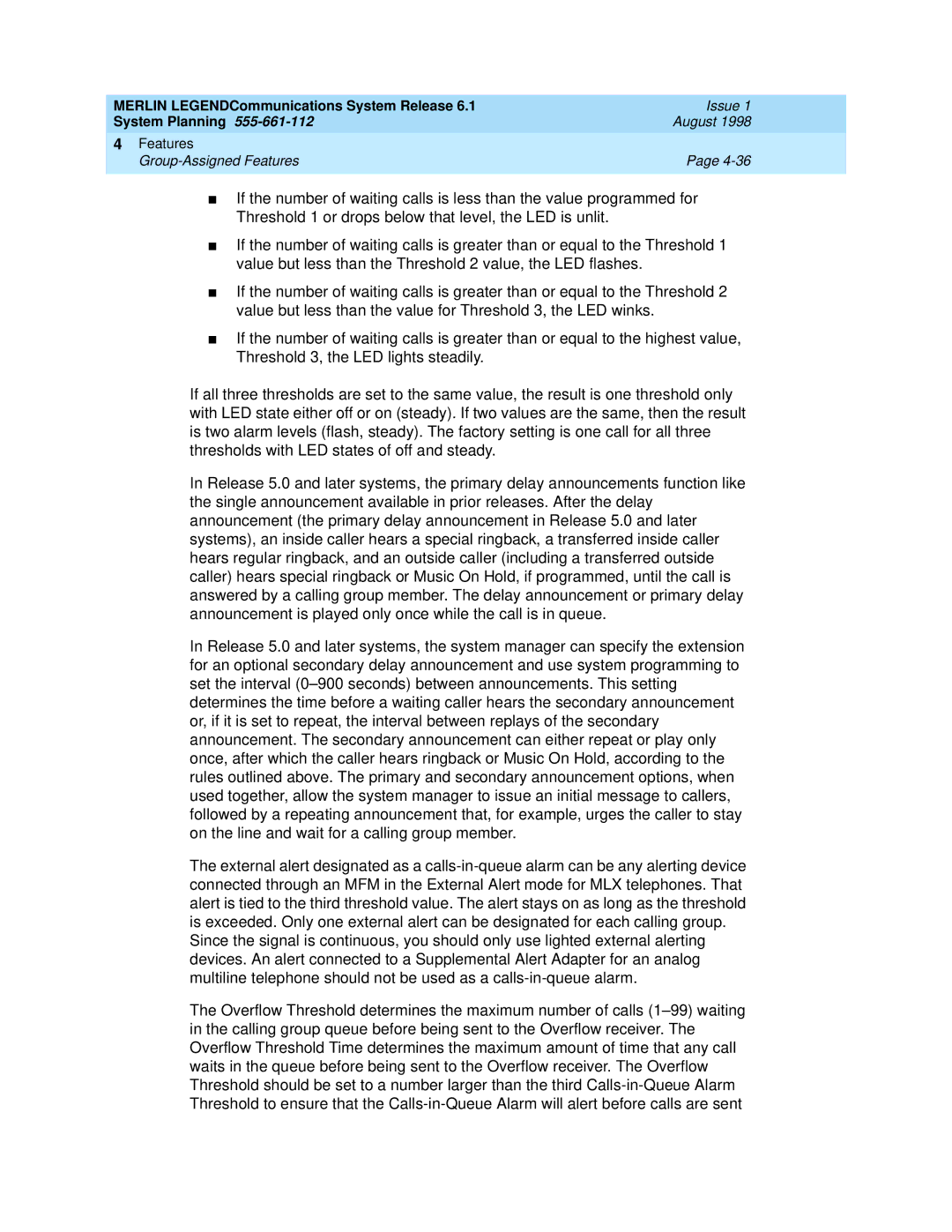MERLIN LEGENDCommunications System Release 6.1 | Issue 1 |
System Planning | August 1998 |
4 Features |
|
Page | |
|
|
■If the number of waiting calls is less than the value programmed for Threshold 1 or drops below that level, the LED is unlit.
■If the number of waiting calls is greater than or equal to the Threshold 1 value but less than the Threshold 2 value, the LED flashes.
■If the number of waiting calls is greater than or equal to the Threshold 2 value but less than the value for Threshold 3, the LED winks.
■If the number of waiting calls is greater than or equal to the highest value, Threshold 3, the LED lights steadily.
If all three thresholds are set to the same value, the result is one threshold only with LED state either off or on (steady). If two values are the same, then the result is two alarm levels (flash, steady). The factory setting is one call for all three thresholds with LED states of off and steady.
In Release 5.0 and later systems, the primary delay announcements function like the single announcement available in prior releases. After the delay announcement (the primary delay announcement in Release 5.0 and later systems), an inside caller hears a special ringback, a transferred inside caller hears regular ringback, and an outside caller (including a transferred outside caller) hears special ringback or Music On Hold, if programmed, until the call is answered by a calling group member. The delay announcement or primary delay announcement is played only once while the call is in queue.
In Release 5.0 and later systems, the system manager can specify the extension for an optional secondary delay announcement and use system programming to set the interval
The external alert designated as a
Since the signal is continuous, you should only use lighted external alerting devices. An alert connected to a Supplemental Alert Adapter for an analog multiline telephone should not be used as a
The Overflow Threshold determines the maximum number of calls
